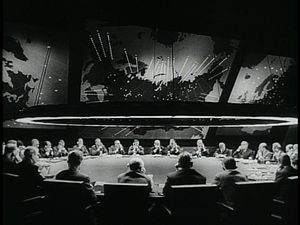The Pentagon’s latest annual report to Congress on “Military and Security Developments Involving the People’s Republic of China,” states that the PLA is arming its intercontinental ballistic missiles (ICBMs) with as many as three independently targetable nuclear warheads (multiple independent reentry vehicles or MIRVs). According to a May 16 New York Times article by David Sanger and William Broad, this decision represents a break with previous Chinese nuclear arms policy. “[T]he technology of miniaturizing warheads and putting three or more atop a single missile,” they explain, “has been in Chinese hands for decades. But a succession of Chinese leaders deliberately let it sit unused; they were not interested in getting into the kind of arms race that characterized the Cold War nuclear competition between the United States and the Soviet Union.”
Chinese President Xi Jinping’s decision to develop and deploy MIRVed missiles, at the same time that China is increasing its naval power and taking aggressive steps to dominate the South China Sea, according to Ashley Tellis of the Carnegie Endowment for International Peace, “is obviously part of an effort to prepare for long-term competition with the United States.”
The Pentagon report notes that China fields 50-60 silo-based and road-mobile ICBMs. China is also developing a submarine-launched ballistic missile (SLBM) with a range of 7,400 kilometers. MIRV capability will therefore enable China to at least triple the number of nuclear warheads it can launch at U.S. or other targets. Sanger and Broad point out that currently the U.S. has an eight-to-one lead over China in nuclear forces.
What does this development portend for the future of U.S.-Chinese relations? Is it time for the United States to start thinking again about nuclear strategy?
Since the end of the Cold War, the United States has focused more on reducing its nuclear capabilities than planning a force structure for deterrence and formulating a doctrine for waging nuclear war. Other than Pentagon planners secretly envisioning nuclear war scenarios and developing options for achieving victory, almost nobody publicly talks or writes about nuclear force structure and fighting nuclear wars. It just hasn’t seemed relevant to contemporary discussions of international politics.
The Chinese decision to MIRV their intercontinental ballistic missiles may change that. This could be the beginning of a new nuclear arms race, and this time there will be three principal competitors, China, the United States and Russia, and significant but lesser players such as India, Pakistan, Israel, France, and Britain, and perhaps even emerging nuclear powers such as North Korea and Iran.
If this is so, it may be time for American statesmen and strategists to once again start thinking about the unthinkable. It may be time to blow the dust off of some old books and articles written by the nuclear strategists of the Cold War.
They could start with Bernard Brodies’s The Absolute Weapon (1946) and his later work, Strategy in the Missile Age (1959); move on to Henry Kissinger’s Nuclear Weapons and Foreign Policy (1956); and pay close attention to Albert Wohlstetter’s seminal article in Foreign Affairs in 1959, “The Delicate Balance of Terror.” They could then grapple with Herman Kahn’s On Thermonuclear War (1960), Thinking About the Unthinkable (1962), and On Escalation: Metaphors and Scenarios (1965). Raymond Aron’s On War (1958) and The Great Debate (1963) would also be useful.
Their minds would be stimulated by Edward Luttwak’s essays, “Nuclear Strategy” (1974) and “How to Think About Nuclear War” (1982) in Commentary; Paul Nitze’s article, “Assuring Strategic Stability in an era of Détente” (1976) in Foreign Affairs; Wohlstetter’s “How Much is Enough? How Mad is MAD?” (1974); Colin Gray’s “Nuclear Strategy: The Case for a Theory of Victory” (1979) in International Security; and Robert Jastrow’s “Why Strategic Superiority Matters” (1983) in Commentary.
U.S. statesmen and strategists should begin to familiarize themselves with “missile throw weight,” “circular error probable,” “liquid fueled” and “solid fueled” rockets, “massive retaliation,” “flexible response,” “mutual assured destruction” (MAD), “first-strike capability,” “counterforce” and “countervalue,” “launch on warning,” “spaced-based missile defense,” and other old relics of the Cold War.
Finally, they should read Evan Thomas’ new book, Ike’s Bluff, and Richard Nixon’s article “How to Live with the Bomb” in the September 20, 1985 issue of National Review, to gain a better understanding of how the nuclear balance can influence foreign policy events and outcomes.
Ignoring the implications of China’s decision to MIRV intercontinental ballistic missiles will not make them go away. We may be just a few years away from a new delicate balance of terror.

































